Under the Skin: Tattoo Art and Tiki (no Taka) at Musée du quai Branly
- (first published on artlifemagazine.com)
- Jul 15, 2014
- 5 min read
Updated: Mar 24, 2020
(Paris.) Opened in 2006 as the pet project of President Chirac, Musée du Quai Branly tries hard to be the 21th Century version of an ethnological museum. But is this even possible? First of all, the institution offers a perfect example of failed architecture. Flower planted outer walls lure tourists into a jungle-like garden of ferns with the entrance to the museum hidden deep in the “heart of darkness”. Inside the building, about half the space is used for the staircase. Not actually a stairs, but a ridiculously oversized ramp meandering between the floors, its main purpose is to serve as the canvas for a permanent installation. The River by Charles Sandison projects a waterfall of words - names of peoples and places in many languages -beneath our feet. Cultures come and go, washed away by time, panta rhei. In this artwork, all languages, all cultures appear condensed to one (and trampled upon). Upstairs (“Up-ramps” rather) you constantly have to watch out not to bump into one of many thin columns that have been installed after completion of the building. It’s not quite clear whether they serve to correct errors in the architect’s structural calculations, or to keep the nets in place that, spanned under the ceiling, prevent falling debris from hitting someone (again: the building dates from 2006). The Quay Branly Museum owns France’s most important ethnographic collection, but sadly the exhibits are diminished by the grotesque architecture. You feel pity for the curators and their struggle to find niches for the presentation of art. Like the antithesis to another famous Parisian museum, the Centre Pompidou, walls are just everywhere, cutting the space and shutting in visitors and art alike. Maybe it’s symbolic: Much ado about nothing, the massive concrete wants to express magnitude and divert from all questions concerning collection and concept. A building a statement to manifest its own importance, materialized marketing. The official “inoffensive” French term for art from “the rest of the world” is "Arts Premiers": “First Arts” (of course not meaning the first stage in cultural development, thus sort of implying a teleological tendency in history, but - - - well, in fact it does, but you’re not supposed to mention it. Just like in real life: respect all differences, but never, never ever, mention them!). Despite the contemporary trend to unite all cultures in one, Quay Branly still seems to accept and even to celebrate cultures with a plural “s”, an attitude that deserves much praise. The museum chose to arrange its collections not in styles, motives or moments in time, but in the most conservative form: in continents, states and tribes. Road signs point to “Africa”, “Oceania” and “America”, everywhere fascinating objects wait to be discovered. But today we’ve come for a temporary exhibition: Tatoueurs, Tatoués (Tattooers, Tattooed) (A title, that by the way invites critics for not mentioning “Tatoueuses et tatouées" - "Tattooesses and tattooed females" too). The show starts with a world map of tattooed peoples – they are everywhere - , and then quickly takes the European perspective. Documents, photos, books, films, needles, machines and even pieces of actual skin tell of how tattoos have been perceived and used in Europe since the 18th Century. Colonial fascination for the painted “savage”, but also subcultures who copied them: sailors, soldiers, inmates. Two photos shortly tell about tattooing as a means of dehumanizing others: Prisoners of a Nazi death camp, and – leaving Europe – Armenian women forcibly tattooed under Ottoman oppression. Later, the show takes us on a tour from country to country. Tattoos in Japan, in China, Thailand, Samoa, America, etc.: Tradition oscillating between mainstream and outsider groups. The different historic styles, symbols and ornaments increasingly merge in global fashion. Closing the circle and returning to Europe, we learn, Stone Agers around here proudly wore their tattoos (Ötzi did), and despite the custom falling into disgrace when Christianity took power, medieval pilgrims to “the holy land” frequently got tattooed for a souvenir. For the past twenty years a new trend in Western societies took tattoos from the subcultures into the mainstream again. Musée du quai Branly also asked famous tattooers to provide examples of their art on artificial skin. We would have loved to find one of Wim Delvoye’s tattoed pigs too, but this is not really a contemporary art exhibition. At the end we watch a film collage of tattoos in fashion shows, in commercials and on pop stars. For those who followed the World Cup (Association Football; Soccer): Did you spot only one untattoed arm? This “tatploitation” could mean the hype will be over soon, killed by overkill. But it’s not for granted, tattoos could as well stay with us for many years to come. Tatoueurs, Tatoués does not search too much into motives, does not try to explain the meaning of the phenomenon. Different to haircut or bodybuilding, it’s the most permanent voluntary alteration of our body (yes, we know, there’s also branding, piercing etc, while others like to cut themselves for fun, so let’s say: “one of the most permanent...”). Historically, tattoos often served as amulets, as a magic charm, a religious rite; and continue to do so in tribal cultures (“native”, “indigenous”, chose your term). More generally, tattoos promise protection, even without a specific religious belief attached. Like clothes, they cover the body to keep us from feeling naked, they are another layer to shield the world off. Which could well explain their popularity in angst-ridden times. A tattoo is a piece of cloth that you always wear (yeah, think of that next time you pretend your tattoo’s sexy, but don’t want your partner to keep the socks on). No need to ever change or wash it like your favourite T-Shirt (ok: no need to change it). It promises continuity, the manifestation of a status quo – even when the image is unique and not prêt-a-porter, it will stay the same, stay with you unthreatened by change. A scripture, a writing against time and decay. It’s also notable how since beginning of time tattoos served as a notepad for autobiographies. One might ask whether tattooing an important life event is much different from writing your name on your palm. Would you really forget otherwise? Talking about hypes: there are more temporary exhibitions at Quay Branly Museum, one of them commemorating the importation of Tiki culture to 1950s and ‘60s North America. The hard working cold warriors needed a peaceful refuge, and found it in the eternal dream of Polynesia. Not necessarily French Polynesia, as luckily in 1959 Hawaii became the 50th state. The hype soon invaded all aspects of everyday life, omnipresent in movies and on TV with Brando, the King and Gilligan. A major design trend that culminated in theme styled hotels and bars; Quay Branly Museum shows some hilarious objects from matches to green soap (a favourite: the “Hula at Home” set, complete with bamboo bra and flower skirt). Yet, the almond-eyed eyed beauties all appear completely untatooed. Maybe the time is right for a revival? If only for the choice of delicious cocktails we discover on the menus of legendary places like Don the Beachcomber or Trader Dick’s. Aloha! Tatoueurs, Tatoués, 06 May-18 October 2014 Tiki Pop, 24 June-28 September 2014 Musée du quai Branly, Paris

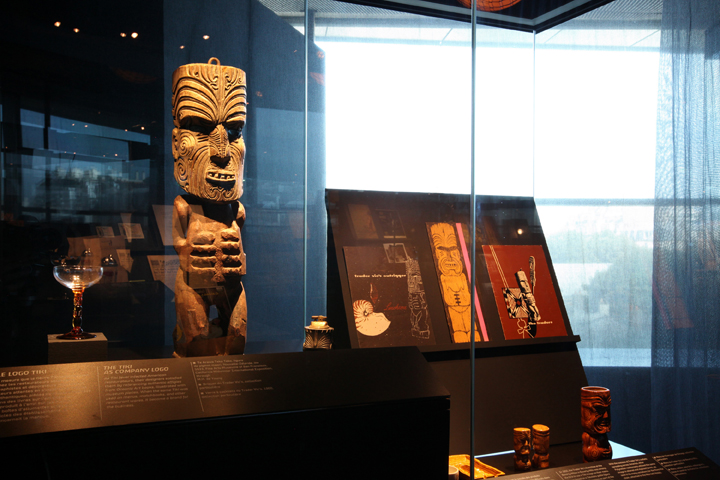

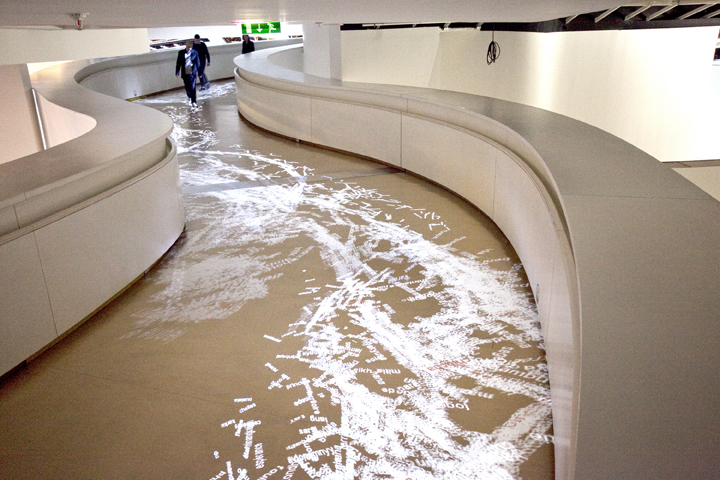

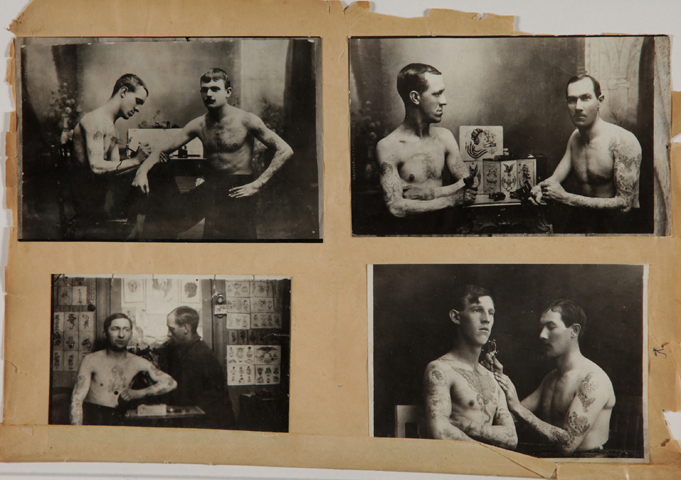
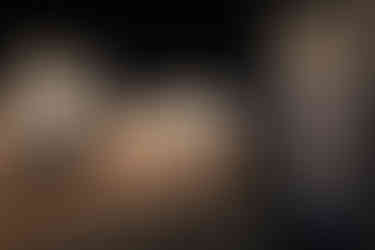


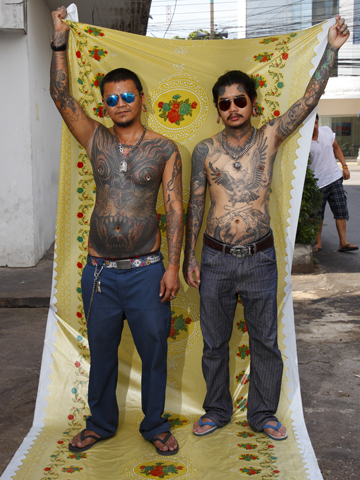

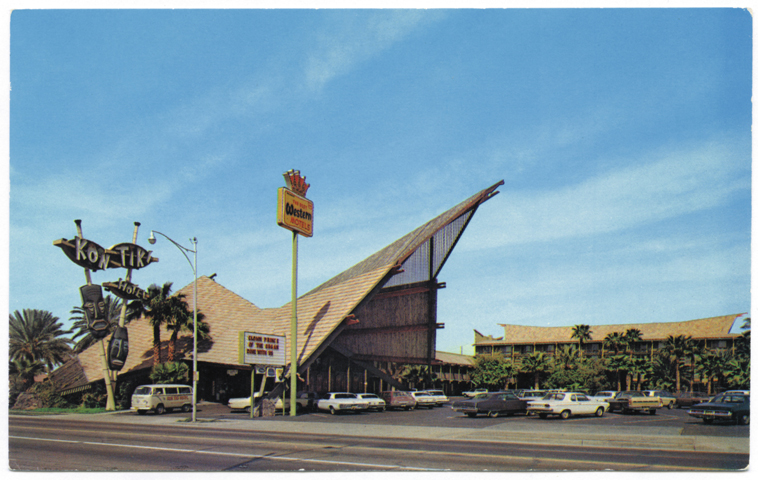

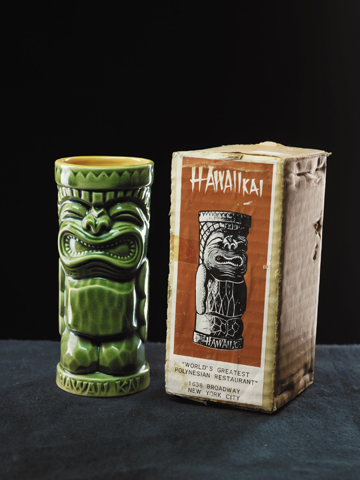
Comments